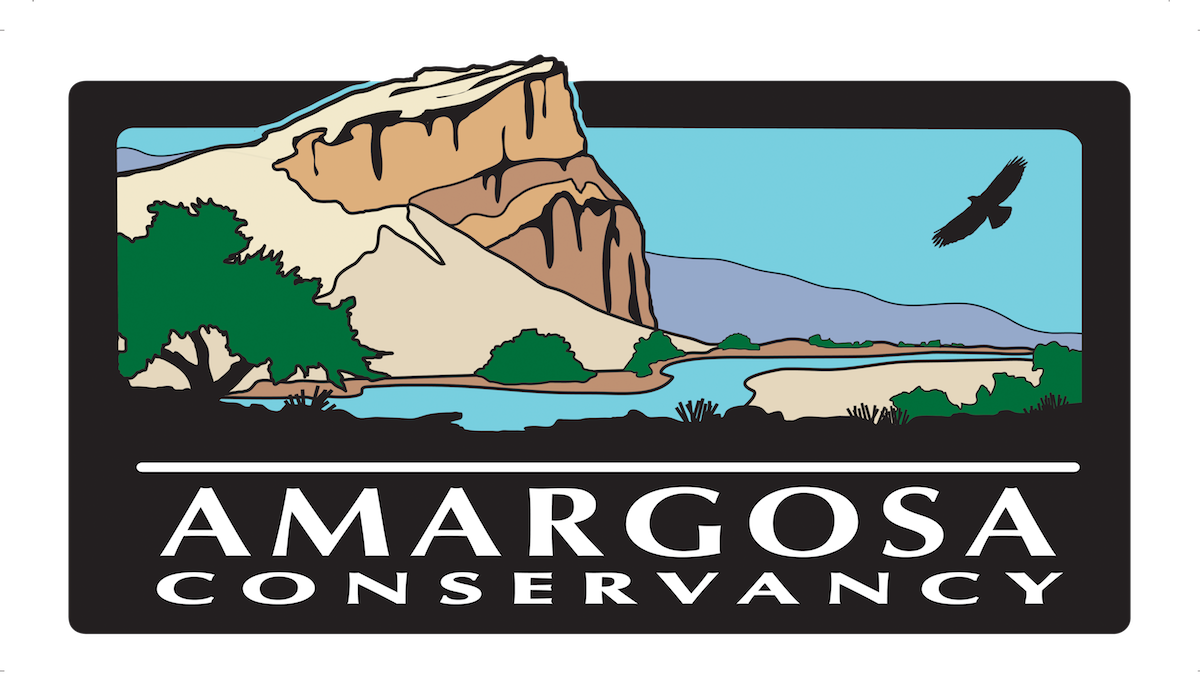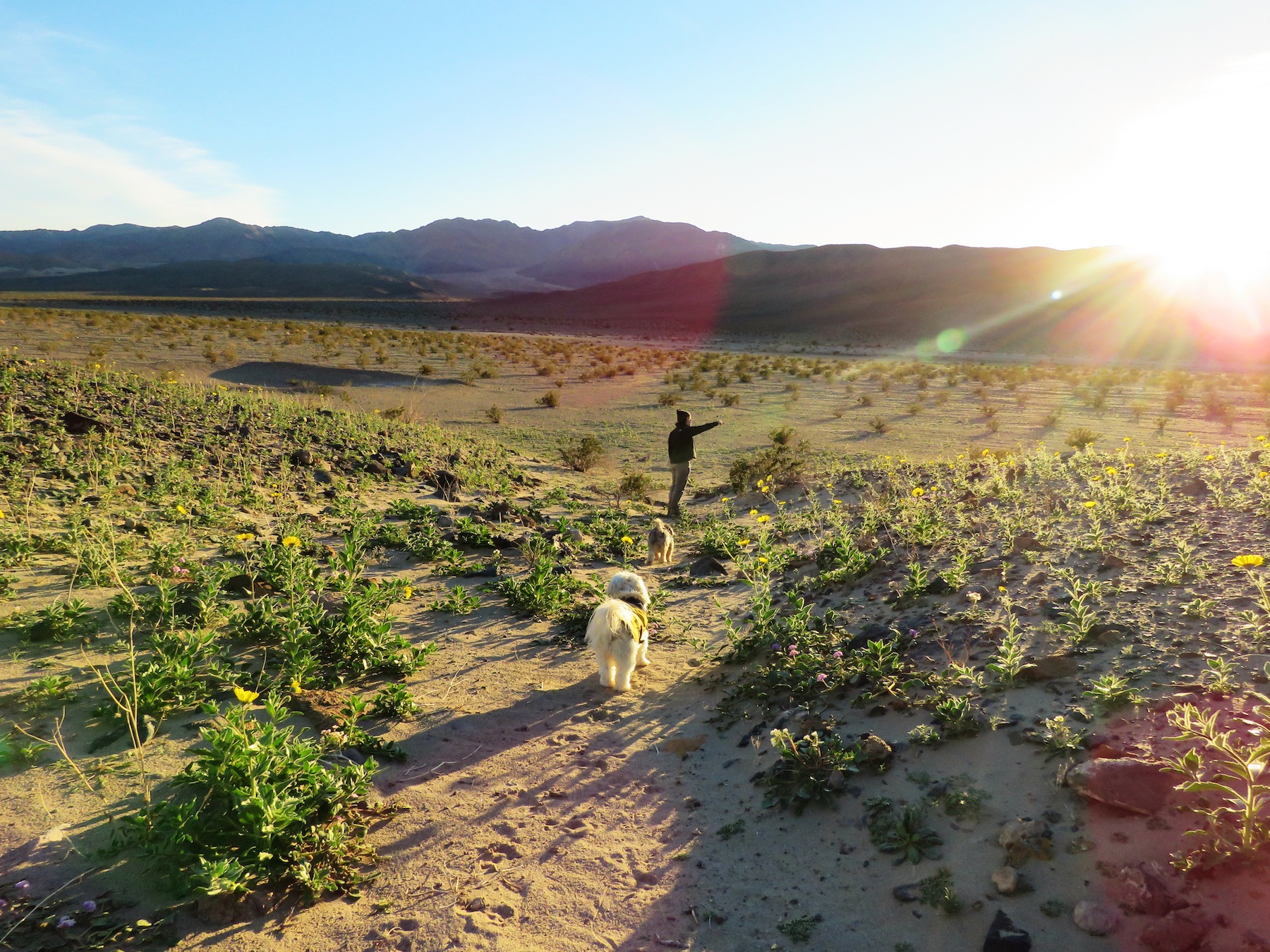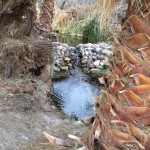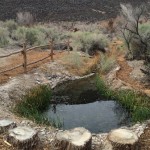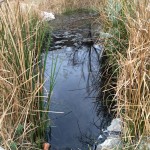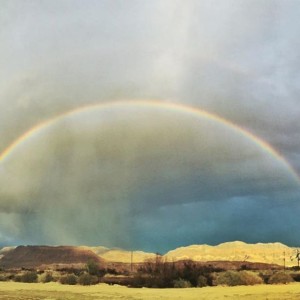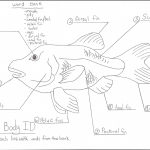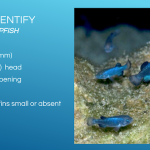By Jayna Sames
February 2016
“I didn’t bring my hip waders. I thought I was moving to the desert!” I jokingly responded to the two other interns, Abby and Anne, as I walked through the conservancy doorway soaking wet in short sleeves, shorts, and dripping Keen sandals. I had returned from an excursion to the Shoshone pupfish ponds where I was given the task to apprentice community volunteers, Debbie and Clay, to master Pupfish pond maintenance techniques. Day in and day out, for months, Debbie and Clay have worked to create the ponds, groom them, carve out beautiful pathways, and transplant the right vegetation to make conditions suitable for this endemic pupfish species living in our waters. I’m lucky enough to learn from the experts and will soon take on the endeavor of helping with weekly pond maintenance.
- Pupfish Ponds
- Pupfish Ponds
- Pupfish Ponds
My first training task was to get in the muck and cut down matted thickets of Athel and Date Palm roots that continuously sprawl across the tops of the pond water and prevent pupfish mobility. I could see a true contrast looking at the beautiful silhouette left by the Date Palm over the top of the water before reaching in and feeling the harsh and ugly result of closely shared habitats.
Even after researching the area, it didn’t hit me until I arrived here in Shoshone that I’ve embarked on such an amazing Desert Wetland ecosystem full of surprises and tremendous gifts. Not many interns have such a role in maintaining habitat to keep an endemic and formerly endangered species alive and flourishing. I’m excited for the coming weeks, even if I get a little soggy in the process.
Working outside at the ponds that afternoon was refreshing after spending all morning indoors teaching ecology lessons to high school students at Death Valley Academy. Part of my role as the first Environmental Education and Outreach intern is visiting schools in the area to teach students about their own ecosystems and get them familiar with its unique wildlife and habitats.
The DV Academy high school students now know all about the endangered Amargosa Vole. After discussing facts on lifecycle and vole dependence on Bulrush sedges, we delved deeper into the cultural attitudes we place on rodents and why its important to understand and respect this endangered species. We talked about its delicate habitat, positive impacts of ecotourism, and ended the lesson with an energetic class debate involving groups of different economic, political, and environmental stake holders. The students were hesitant at first to volunteer their opinions but soon felt comfortable and even anxious to swiftly rebut their opponents in rounds of debate.
- Elementary Activity
- Presentation
I also gave a lesson on the Amargosa Pupfish to elementary students and a presentation on Desert Wetland ecosystems to middle schoolers earlier in the week. I can honestly say that those presentations were some of the most rewarding. I’ve been stopped this week in neighboring Tecopa and downtown Shoshone by students engaging me in conversations about fish and birds wanting to know more, which both surprised the socks off me and gave me hope.
Other current projects under the environmental education and outreach program include presenting at the Death Valley Bioblitz, creating a plant guide to the Shoshone Wetlands, designing Shoshone Museum displays, giving eco tours of the China Ranch trails, creating signage, and much more!
As a native Michigander transplanted into the Mojave, I was originally unsure about how quickly I would assimilate and learn the ins and outs of these foreign ecosystems. However after just three days of orientation, I was floored by the unique hydrology of the Amargosa Basin, the beauty of our wetland trails, and the goodness in our people.
